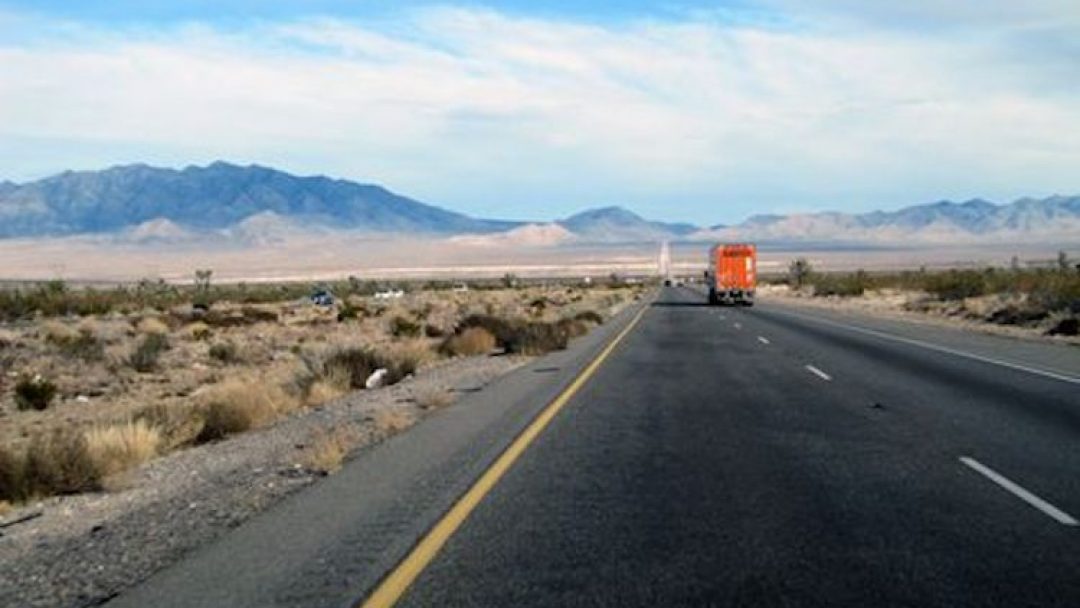According to a new report released today by TRIP, a national transportation research nonprofit, the nation’s rural transportation system is in need of immediate improvements to address deficient roads and bridges, high crash rates, and inadequate connectivity and capacity. The chart shows the states with the highest rate of rural pavements in poor condition, states with the highest share of rural bridges that are rated poor/structurally deficient, and states with the highest fatality rates on non-Interstate, rural roads. As you can see, Arizona’s rural roads rank among the highest for fatalities.
America’s rural transportation system is in need of repairs and modernization to support economic growth in the nation’s Heartland, which is a critical source of energy, food and fiber. With increases in population and growing employment, rural America is heavily reliant on the quality of its transportation system to sustain further growth. This is according to a new report released today by TRIP, a national transportation research nonprofit. The report, Rural Connections: Challenges and Opportunities in America’s Heartland, evaluates the safety and condition of the nation’s rural roads and bridges and finds that the nation’s rural transportation system is in need of immediate improvements to address deficient roads and bridges, high crash rates, and inadequate connectivity and capacity. The chart below shows the states with the highest rate of rural pavements in poor condition, states with the highest share of rural bridges that are rated poor/structurally deficient, and states with the highest fatality rates on non-Interstate, rural roads.
The rate of traffic fatalities on Arizona’s non-Interstate, rural roads is the third highest in the nation and is more than double the fatality rate on all other roads in the state – 2.94 fatalities per 100 million vehicle miles of travel vs. 1.31.
“This report conveys a disturbing message we already knew, but can now back up with numbers – Arizona’s roads are inefficient and dangerous,” said Robert Medler, vice president of the Tucson Metro Chamber. “Poor roads cause unnecessary economic harm to rural communities. We need to invest the necessary resources to fix our rural roads so communities throughout Arizona are able to economically prosper and above all, save lives.”
America’s rural transportation system provides the first and last link in the supply chain from farm to market, connects manufacturers to their customers, supports the tourism industry, and enables the production of energy, food and fiber. Rural Americans are more reliant on the quality of their transportation system than their urban counterparts.
“Arizona continues to move into a more dangerous position with its rural roads. Something must be done to address this disturbing trend,” said Kevin Adam, rural transportation liaison at the Rural Transportation Advocacy Council. “While the legislature and governor have agreed on investing in infrastructure this year, the long-term investment challenge needs to be addressed.”
“Improving Arizona’s rural interstates and state highways is critical for economic vitality. The narrow Interstate 10 between Chandler and Casa Grande is extremely dangerous and is choking both rural and urban economic growth,” said Tom Dorn of the I-10 Widening Alliance.
The TRIP report finds that the U.S. needs to implement transportation improvements that will improve rural transportation connectivity, safety and conditions to provide the nation’s small communities and rural areas with safe and efficient access to support quality of life and enhance economic productivity.
“Farmers and ranchers depend on rural roads, highways and bridges for daily life and to move their products to market,” said Zippy Duvall, president of the American Farm Bureau Federation. “Securing the appropriate resources at the local, state and federal levels will allow for the improvements needed to provide a rural transportation system that will keep goods moving, American agriculture competitive and rural Americans safe.”
“The health of the nation’s economy and the safety and quality of life in America’s small communities and rural areas ride on our rural transportation system. Our rural roads and bridges provide crucial links from farm to market, move manufactured and energy products, and provide access to countless tourism, social and recreational destinations,” said Will Wilkins, executive director of TRIP. “Fixing the federal Highway Trust Fund with a long-term, sustainable source of revenue that supports the transportation investment needed will be crucial to the modernization of our rural transportation system.”








